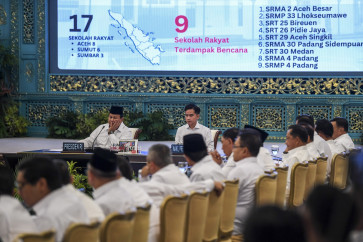Popular Reads
Top Results
Can't find what you're looking for?
View all search resultsPopular Reads
Top Results
Can't find what you're looking for?
View all search resultsA look at Indonesia’s growth under the new government
High-quality capital expenditure in infrastructure, health and education boosts growth even more than spending on current expenditure like subsidies.
Change text size
Gift Premium Articles
to Anyone
T
o get a quick and reliable read on how Indonesia is growing, we have created an Indonesia growth tracker, which brings together a bunch of activity data and provides a monthly summary of economic activity across the key sectors of the economy.
You may ask why we even need this tracker when we already have an official gross domestic product (GDP) series. Well, GDP may not capture turning points quickly as it is quarterly and only available with a lag. Encouragingly, our tracker has a 70 percent correlation with GDP in the post pandemic period, which means that important information contained in GDP gets highlighted early. What could be better?
So what is the tracker showing currently?
Alas, it shows that activity has been weak in recent quarters – in fact, a shade weaker than GDP data suggests. It seems that the sharp fall in commodity prices, especially in coal, which Indonesia exports, has led to weakness in growth.
Furthermore, a volatile external backdrop is coming in the way of policy rate cuts. And fiscal policy, too, hasn’t been loose. Finally, the scarring from the pandemic is still likely impacting data.
What can be done to set growth back onto a rising path? This is particularly important given the new government taking over in October aims to raise growth from 5 percent now to 6 percent to start with, and eventually all the way to 8 percent.
To answer this more precisely, we fit a growth model to the activity tracker to understand what drives growth in the economy. We find five variables explain much of the country’s growth dynamics.



















